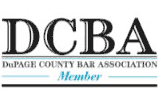33 N. Dearborn Street, Suite 1130, Chicago, IL 60602
5 Convenient Locations
How Does the Social Security Administration Determine Whether Someone With Autism Is Disabled?
Autism is a severe developmental disorder affecting both social interaction and communication and usually begins at birth or within the first two and a half years of life. In its early stages, autism shares many of the same behaviors as Pervasive Developmental Disorder (PDD) and Asperger's Syndrome and can be difficult to diagnose since the majority of children with autism appear to be physically normal. In fact, when the baby boomer generation were still teenagers, autism occurred in approximately five children per 10,000 live births. Today, numerous studies have reported that number closer to one in 150 children diagnosed with autism. With autism steadily on the rise, it is important to know how the Social Security Administration (SSA) determines whether your child is disabled by autism.
SSA has a Listing of Impairments that must be met for someone to be considered disabled. Although meeting a listing can improve your disability claim, its worth noting that failing to meet the criteria under the listing does not necessarily result in the denial of your autism disability claim. The Listing of Impairments contains different criteria for various diseases and disorders and can be very different depending on whether you are a child or adult.
Under SSA's Listing of Impairments, autism falls within Mental Disorders, section 112.10. Requirements specified in both part A and part B of Section 112.10 must be satisfied before the child can be deemed as autistic under SSA law. Part A has three different requisites, all of which must be met for the autistic child to qualify for disability. The first requirement is that there are qualitative deficits in the development of reciprocal social interaction. In other words, the child must have a deficiency or lack of desire to interact with peers. The focus here is on both the ability and the desire to interact. The second requirement is that there are qualitative deficits in verbal and nonverbal communication and in imaginative activity. There is a wide range of deficits that can occur under this requirement, but the main focus is on whether the child's disorder makes it difficult to express themselves. The third requirement under Part A is that the child exhibits a markedly restricted repertoire of activities and interests. Once again, all three of these requirements must be met.
Section 112.10(B) must also be met to be disabled and the rules are dependent on the age of the individual. Part B holds "For older infants and toddlers (age 1 to attainment of age 3), resulting in at least one of the appropriate age-group criteria in paragraph B1 of 112.02; or, for children (age 3 to attainment of age 18), resulting in at least two of the appropriate age-group criteria in paragraphs B2 of 112.02." SSA Listing of Impairments.
Under Part B, children between the ages of 1-3 must show records of at least one of the following: (1) Gross or fine motor development at a level generally acquired by children no more than one-half the child's chronological age, (2) Cognitive/communicative function at a level generally acquired by children no more than one-half the child's chronological age, (3) Social function at a level generally acquired by children no more than one-half the child's chronological age, and (4) Attainment of development or function generally acquired by children no more than two-thirds of the child's chronological age in two or more areas covered by 1, 2, or 3.
Also under Part B, children between the ages of 3-18 must show records of at least two of the following: (1) Marked impairment in age-appropriate cognitive/communicative function, (2) Marked impairment in age-appropriate social functioning, (3) Marked impairment in age-appropriate personal functioning, and (4) Marked difficulties in maintaining concentration, persistence, or pace.






 312-999-0999
312-999-0999 312-999-8999
312-999-8999




